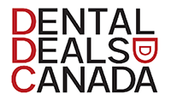The Path to Universal Dental Care in Canada: Challenges and Promises
Canada, often hailed for its inclusive healthcare system, falls behind when it comes to dental care. Among OECD countries, Canada lags, providing limited public funding for oral health. However, there's a glimmer of hope on the horizon – the proposed Canadian Dental Care Plan. In this blog post, we'll dive deep into this transformative plan, explore its key findings, and discuss the promising policy options outlined by experts.
Canadian Dental Care Plan: A Glimpse Into the Future
In a significant stride toward equitable oral healthcare, the federal government unveiled the Canadian Dental Care Plan in its 2023 budget. This ambitious initiative pledges a staggering $13 billion over five years to provide dental care to underserved Canadian families. The eligibility criteria are clear: the plan targets families without dental insurance and those with an annual income under $90,000.
The rollout strategy is methodical, ensuring progressive coverage expansion:
- In late 2022, the plan extended coverage to children under 12.
- By the end of 2023, children under 18, seniors, and individuals with disabilities will benefit.
- The comprehensive vision aims to encompass all qualifying families by the end of 2025.
Beyond the Canadian Dental Care Plan: Bridging the Gaps
The commitment to oral health doesn't stop with the Canadian Dental Care Plan. The federal government has also earmarked $250 million over three years, beginning in 2025-26, to establish the Oral Health Access Fund. This fund seeks to address oral health gaps and access challenges among vulnerable populations, painting a promising picture for Canada's future.
The Road Ahead: Challenges and Visions
While the Canadian Dental Care Plan represents a significant leap forward, it's crucial to scrutinize the chosen "payer of last resort model." Experts argue that this approach, while progressive, may harbor inefficiencies and fall short in ensuring equitable access to primary and preventive dental care. The question that looms large is: What are the ultimate goals in reforming dental care, and how can they be best achieved?
The Four Pillars of Reform: Universality, Fairness, Accessibility, and Accountability
To pave the way for effective reform, the authors emphasize four critical policy goals:
- Universality: Ensure that dental care is universally accessible, irrespective of income or insurance status.
- Fairness: Address disparities and promote equity in access to oral healthcare.
- Accessibility: Make dental care easily accessible to all, especially vulnerable populations.
- Accountability: Establish mechanisms to monitor and regulate the quality of dental care services.
Policy Options: A Multifaceted Evaluation
To achieve these lofty goals, the experts have meticulously assessed six possible policy options. These options range from vouchers and tax credits to conditional transfers and the establishment of an independent, national agency. Each approach has its unique advantages and disadvantages.
The Forward March: Toward Option 6
In late 2022, the federal government adopted Option 1, a cash benefit plan, to provide swift support to children from families earning under $90,000. However, the long-term vision seems to lean toward Option 4, aiming to provide dental insurance coverage for all qualifying families.
But there's an intriguing proposition on the horizon – Option 6. This path envisions all levels of government working in unison to create a national, arm's-length agency, generously funded by the federal government. This approach aligns with Canada's constitutional division of powers and promises to be the most effective and efficient route to ensure broad access and coverage while harmonizing public and private dental care.
A Holistic Approach: Beyond Coverage
Such an agency should do more than offer surface-level insurance coverage. It must spearhead programs to guarantee real access to dental care. Additionally, it should collect and analyze data on oral health, tracking accessibility, care quality, and utilization.
Towards a Brighter Dental Future
Canada's journey toward universal dental coverage is underway. While challenges remain, the nation's commitment to reforming oral healthcare is promising. By embracing a comprehensive approach and exploring innovative options, such as Option 6, Canada can ensure that all its citizens enjoy equitable access to quality dental care, aligning with the nation's commitment to health equity and universal healthcare. The future of oral health in Canada is brighter than ever before.
Source: Institute for Research on Public PolicySource: Institute for Research on Public Policy
Photo by Jason Hafso on Unsplash

